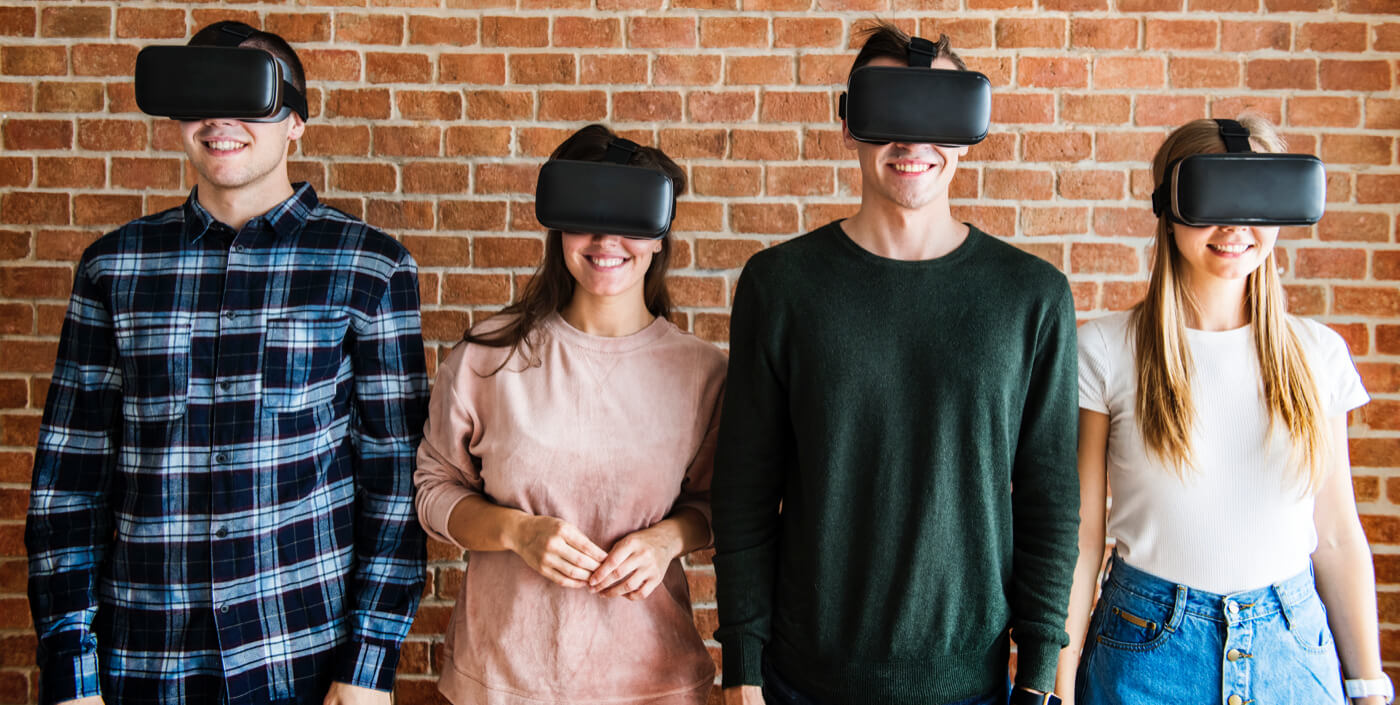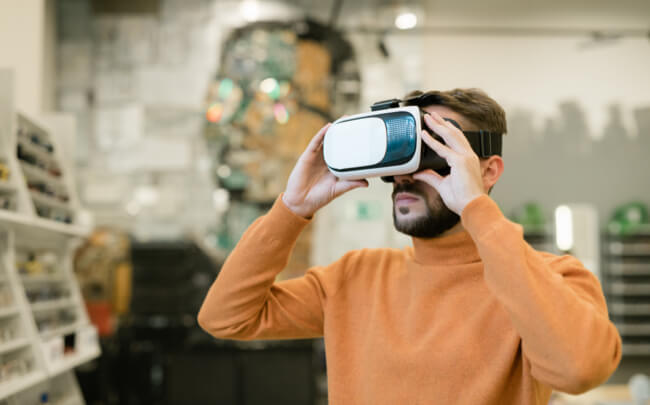-

How Much it ll cost to build an app like
- Cost to develop an Uber Tow Truck App
- Cost to develop a Pest Control App
- Cost To Develop a Handyman App Like Uber
- Cost To Develop a Doctor Appointment Booking App
- Cost To Develop An App Like MoodBites
- Cost To Develop An App Like SkipTheDishes
- Cost To Develop An App Like Q Chat
- Cost To Develop An App Like TickTick
- Cost To Develop An App Like ContractBook
- Cost To Develop An App Like Utter
-

How Much it ll cost to build an app like
- Cost to develop a Video Editing Mobile App like Magisto
- Cost to develop a Live Video Streaming App like Twitch
- Cost to develop an app like Home Workout- No equipment
- Cost to develop a Sports News app like theScore
- Cost to develop an Application like Reddit
- Cost to develop a Sports News app like theScore
- Cost to develop an E-learning platform like Udemy
- Cost to develop an On Demand Doctor App like Heal App

How Virtual Reality & a Post-Pandemic World Will Collide in the Coming Months of 2020
With no end in sight on when social distancing measures will be lifted, many of us are wondering and worried about what post-pandemic life is going to look and feel like. While businesses continue to slowly open and shutter their locks, many must revamp how they operate in order to accommodate the new regulations around person-to-person interaction. As a result, many industry sectors are looking towards new ways of transforming their immediate surroundings to allow learning, work, entertainment, and shopping all to take place without risk of spreading Covid-19. In comes augmented and virtual reality, a means to an end of being able to enjoy the experiences and places that the coronavirus has rendered inaccessible. As post-pandemic life opens up to us, virtual reality has the potential to completely change how we interact with our education systems, real estate and travel, as well as entertainment venues.
One: How Is VR Helping the Real Estate Sector?

While virtual tours and staging technologies have been around for several years now, they are emerging as a paramount feature in real estate amidst the pandemic. This is because renters, buyers, and sellers of properties can no longer host open houses, property viewings, or unit viewings as social distancing restrictions make these difficult. How can VR help amidst the pandemic for this?
- Both buyers and renters can take advantage of 3D virtual tour systems to help homebuyers still participate in the buying and selling process. This ensures that properties are still being viewed and still being bought and sold as a result. The second advantage of this is that it saves a lot of expenses on both the real estate agent and the potential homeowner, as there is less time booked off work and money spent for travel to view properties.
- Virtual reality systems allow potential buyers to view fully finished spaces, even if the space is empty in real life. This can help real estate agents sell properties quicker because it allows the buyer to envision the space as if they were living in it. With house prices dropping and fewer people selling, it is paramount for real estate agents that they sell what they do have access too.
- Real estate agents can sell spaces that don’t even exist yet due to being in construction.
- Touchless technology will be a new normal found in a post-pandemic world, making AR and VR a reality in the real estate sector. This enables decision making without necessarily physically touching or viewing a property.
- With the amount of time that individuals have on their hands at the moment, potential homebuyers can view properties at a much faster rate with virtual reality. Not only do virtual tours and staging make the search for a property quicker, but the viewing as well. This means that more people can use their time wisely and get through more properties on their list.
- VR & AR make the construction of new, affordable housing amidst Covid-19 easier. Since interactions with others are limited to the guidelines of social distancing, it is easier to conduct work on a building if the workers can see a constant 3D representation of it. This eliminates back and forth emails, phone calls, and virtual meetings about construction requirements.
While virtual reality hasn’t spread on a massive scale yet, the post-pandemic life will help give it the boost it needs due to less person-to-person interactions.
Two: How Will VR Shape Retail?
- A “try before you buy” option so that you can use virtual reality to preview furniture purchases, apartments, cars, airline interiors, hotel rooms, and anything else that you would either book or purchase.
- Full 3D augmented reality spaces, like fitting rooms and storefronts, where you will be able to get a very similar shopping experience as if you were in the store, but instead, you have a virtual reality set on your head. This will allow you to see how something looks and potentially be able to interact with products in a limited way.
While we don’t quite have the tech to allow people to smell or feel textures in VR yet, the option to view products before buying online in a simulated environment is likely to catch on.
Three: VR and the Job Sector

By now most of us are used to the Zoom meetings where your coworkers and upper management are squished to the corner of your screen and you all try not to talk over one another as you discuss work objectives and tasks. Well, virtual reality has the potential to change this working space completely, taking you away from a camera and computer screen and placing you into a full simulated virtual environment. We are talking about taking remote working into virtual reality spaces that will allow you and your coworkers to work together in a more familiar environment that feels natural. The same applies to virtual job interviews and employee onboarding processes, where virtual reality opens up new opportunities for remote work to be consistent, engaging, and efficient.
Four: Blending Creativity with the Entertainment & Travel Sectors.

With flying being a no-go at the moment due to international border closures, virtual reality has the ability to really step up how people view travel. Ever wanted to go to the Great Pyramids or see the Seven Natural Wonders of the World without ever leaving your home? That’s the power of VR and with social distancing measures in place, now is as good a time as any to travel to new places without getting too close to those around you.
Music events are big and for a good reason. Music moves our souls. But with social distancing measures, music venues and concerts are definitely off the table for now. A virtual reality headset can change this and allow us to attend a musician’s Livestream from the comfort of your own home without needing to worry about dancing in someone’s personal space or using public restrooms. This can also apply to sports and large stadium crows, where you will be able to interact with your favourite sports teams or movies in a group environment without worrying about social distancing.
Beyond these sectors, virtual reality can be used by video collaboration platforms to replace classroom learning modules, provide immersive learning experiences, create relaxing environments for those who use meditation as a way of relaxing and can be used to take group socialization to the next level by mimicking hallway conversations, and conferences.

Author
Our Partners




WhatsApp us



